Homemade Naan
This post may contain affiliate links. Read my full disclosure policy.
Learn to make irresistibly soft and pillowy naan in your own kitchen with this simple recipe – it far outshines any store-bought version.
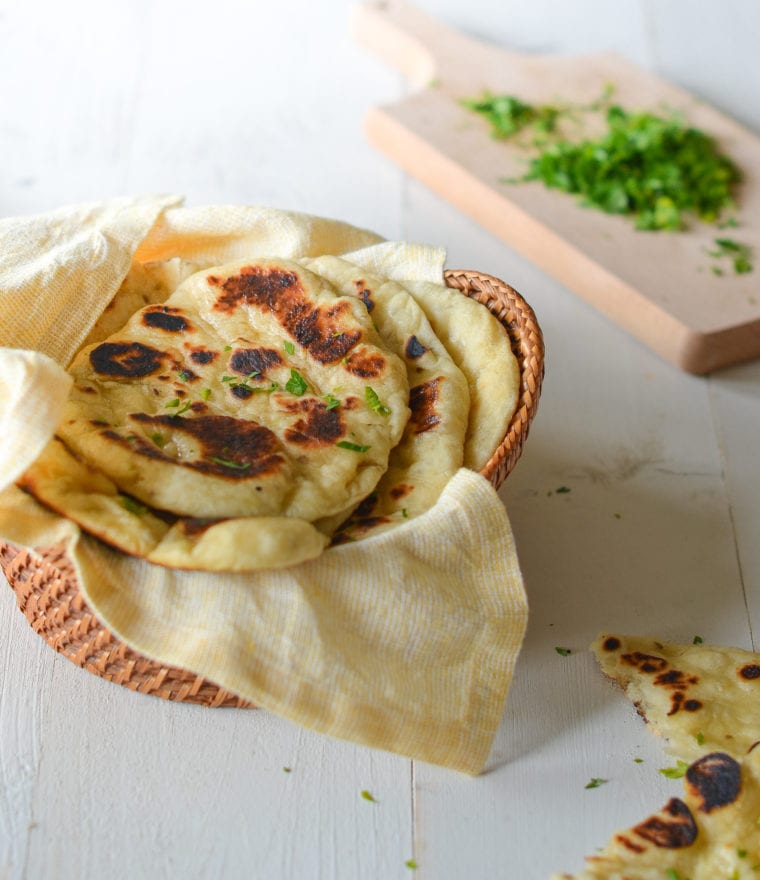
Naan is a soft, pillowy flatbread traditionally baked in a tandoor. This cylindrical clay or metal oven, prevalent in restaurant kitchens across the Indian subcontinent, the Middle East, and Central Asia, reaches scorching temperatures, imparting a distinct smoky flavor to foods. Naan dough, enriched with yogurt and olive oil and flavored with anise seeds, is rolled out and slapped against the tandoor’s inner walls, where it adheres and bakes swiftly over open flames. Once done, it’s brushed with melted butter.
In this recipe, I’ve replicated the tandoor’s high heat and charred flavor using a very hot cast iron skillet or nonstick pan. Making naan at home is so worth the effort—aside from the rising time, it’s quick to prepare, and the taste is leagues above store-bought versions! Paired with saucy dishes like chicken curry, butter chicken, or chicken tikka masala, homemade naan truly shines.
“The dough came together easily, was nice to work with and cooked up beautifully… My search for the perfect naan bread is over—this recipe is the best!”
What You’ll Need To Make Naan
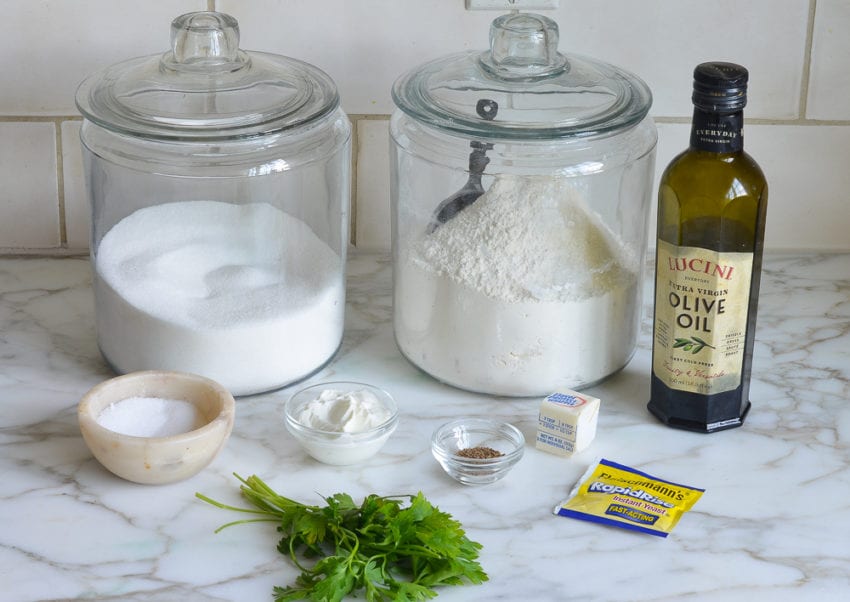
As you can see, the ingredients are very basic. The yogurt and olive oil add a bit of tang and richness. The anise seeds add just a hint of licorice flavor; feel free to leave them out, or replace them with nigella seeds (which have a subtle onion flavor), poppy seeds, or sesame seeds.
Step-by-Step Instructions
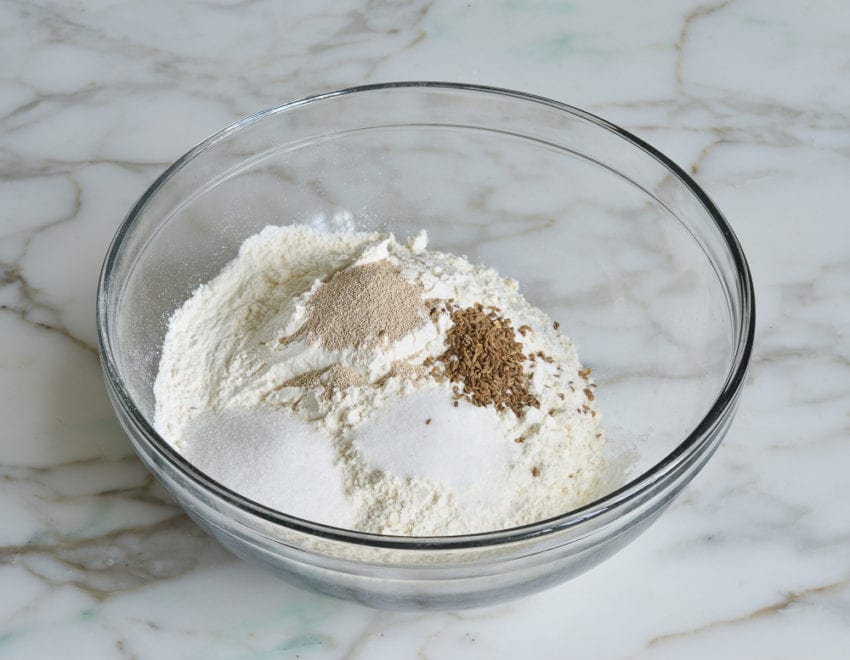
Begin by combining the flour, yeast, sugar, anise seeds and salt in a large bowl, then whisk to combine.
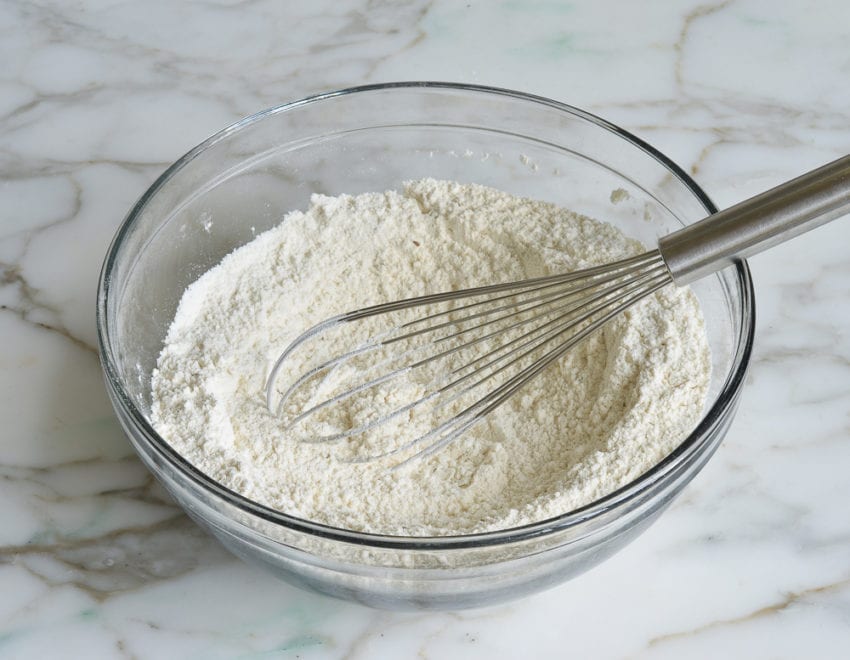
Whisk together the yogurt, olive oil, and warm water.
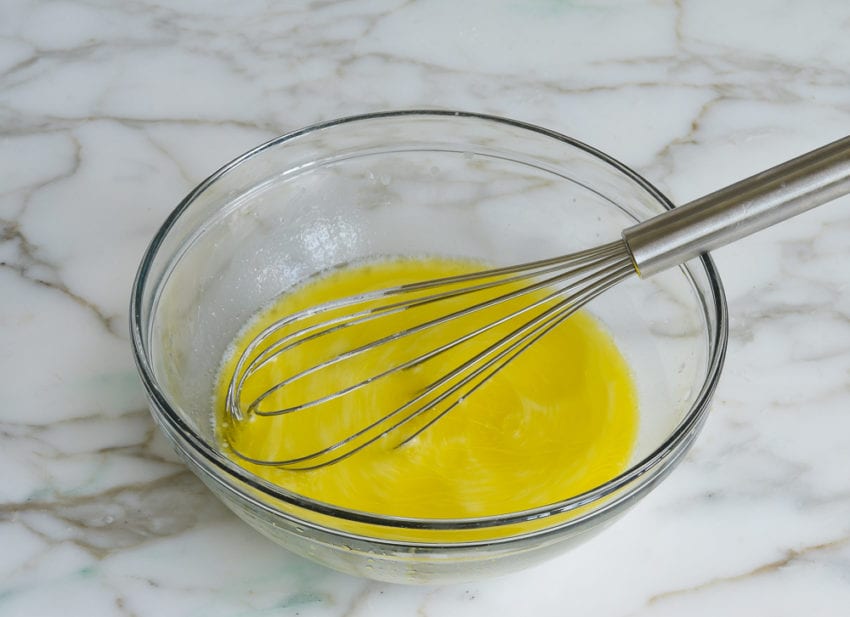
Add the liquid mixture to the dry ingredients.
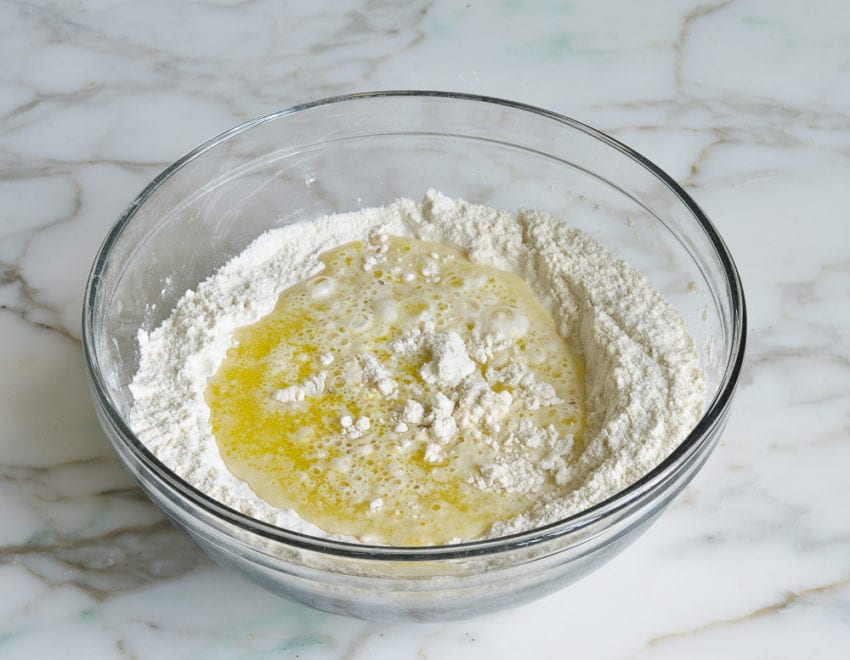
And stir with a fork until the dough comes together.
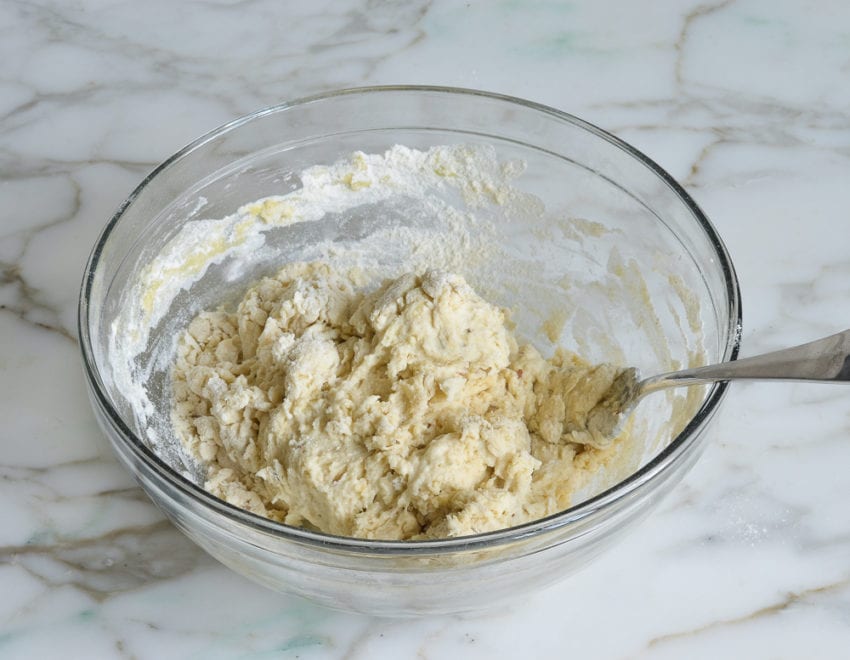
Dust your hands with flour and knead into a soft, sticky ball.
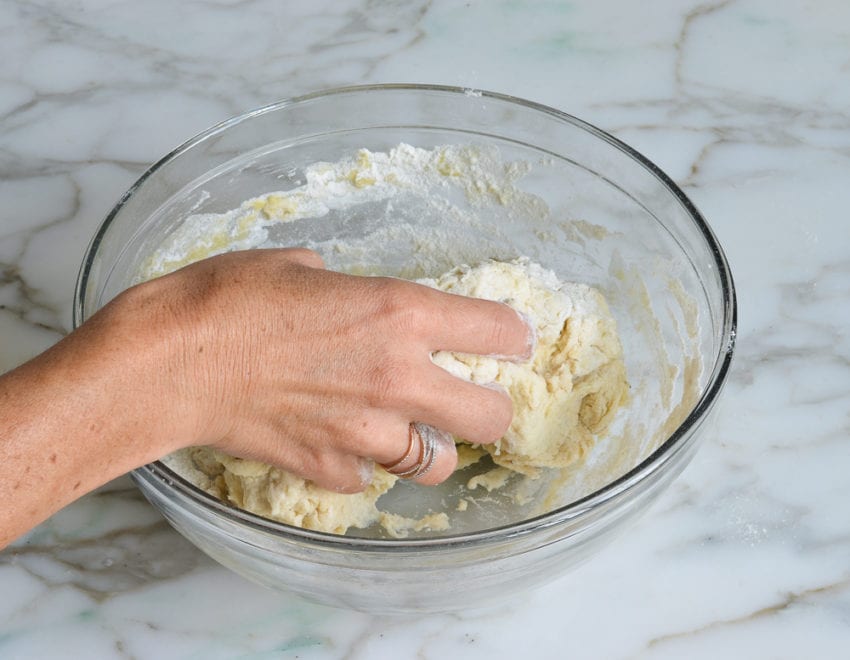
Cover with plastic wrap.
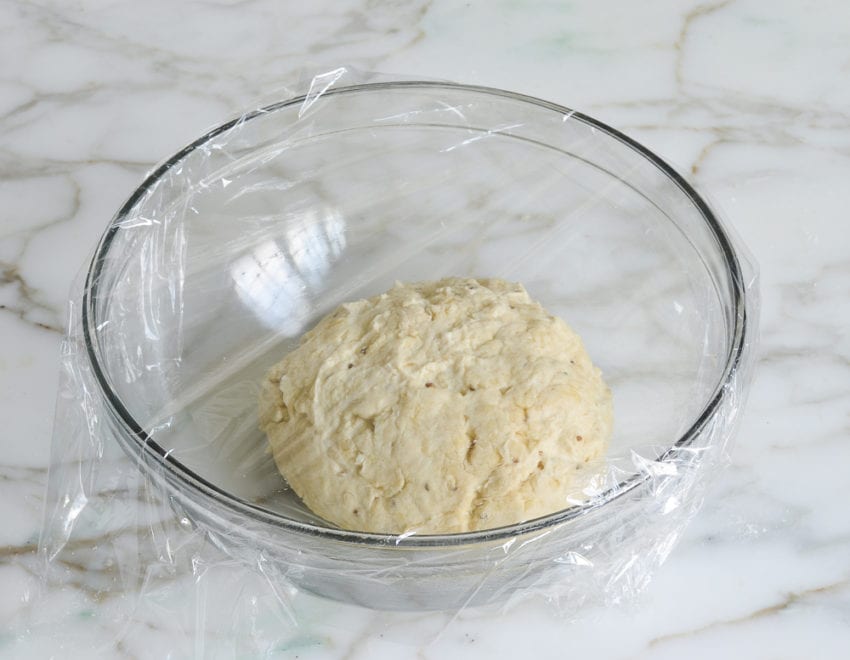
Let rise in a warm spot until about doubled in size, 1 to 1-1/2 hours. Hint: the warmer the spot, the faster it will rise.
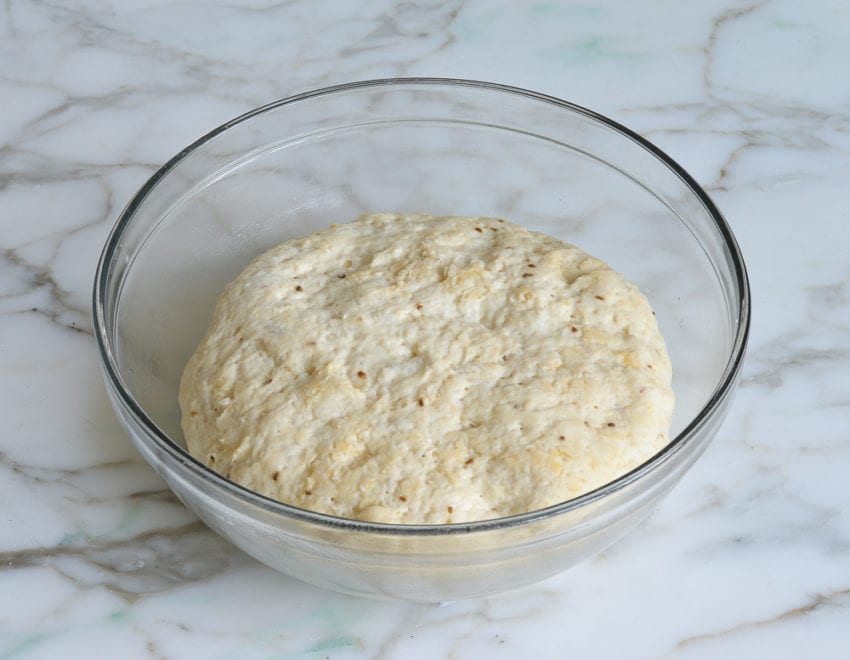
Fill a small bowl with flour. Dust some of the flour onto a work surface. Dump the dough on top and sprinkle the dough with more flour.
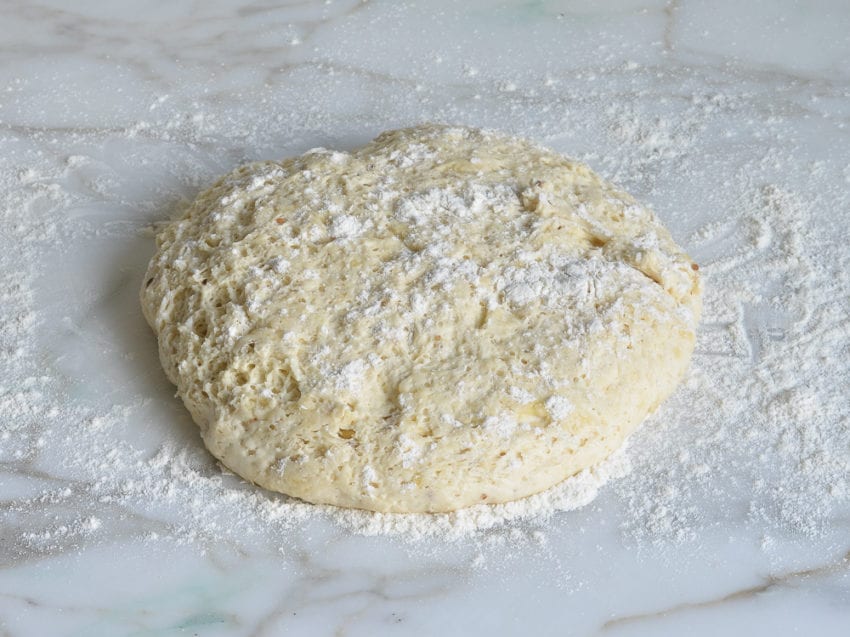
Shape the dough into a rectangle, adding more flour as necessary so it doesn’t stick.
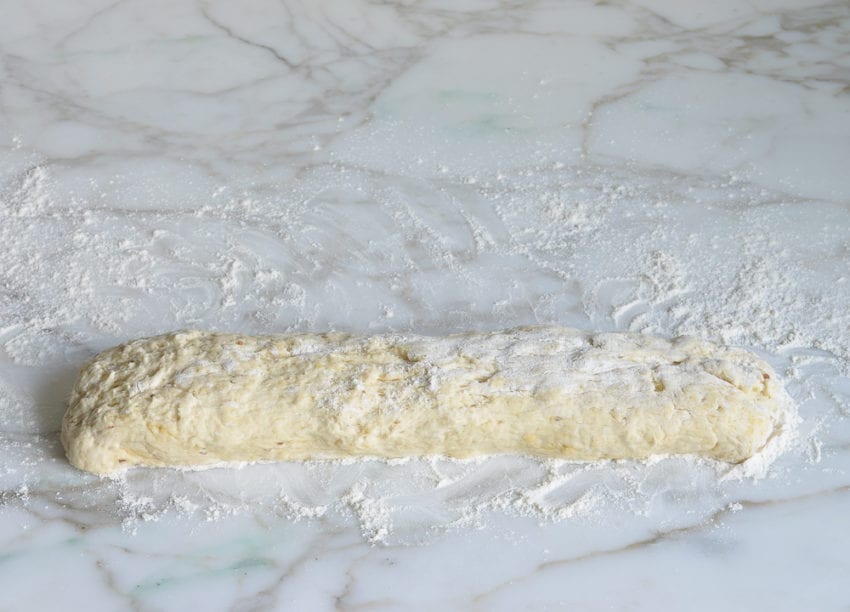
Then, divide into six equal portions.
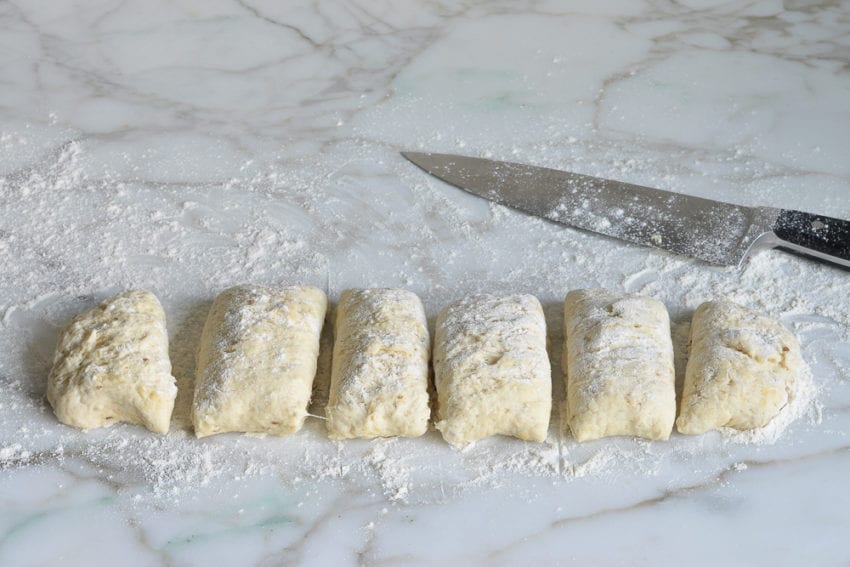
Heat a cast iron or heavy nonstick skillet over medium-high heat until very hot. While it heats, roll one of the dough balls into an oval about 1/8-inch thick.
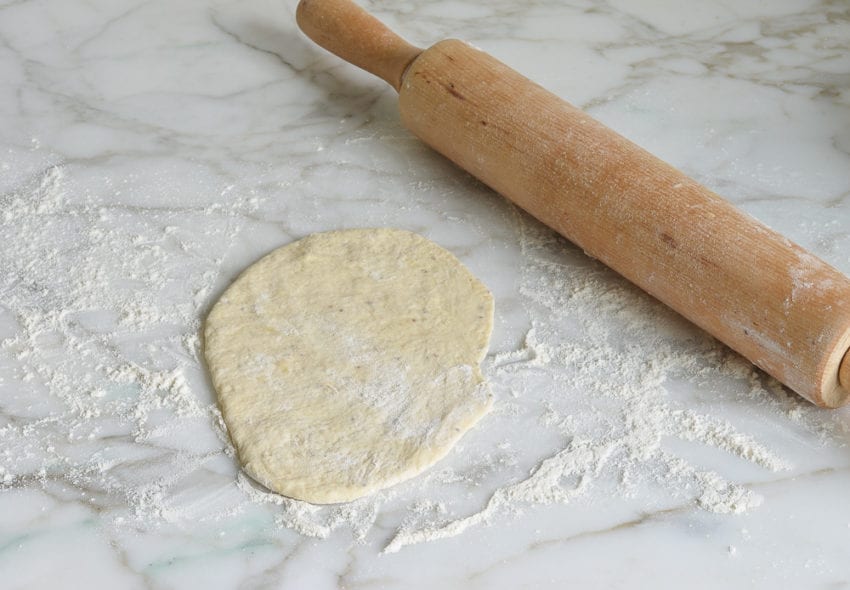
Place the dough in the hot, dry skillet and cook until the surface is full of air bubbles and the bottom is browned and blistered in spots.
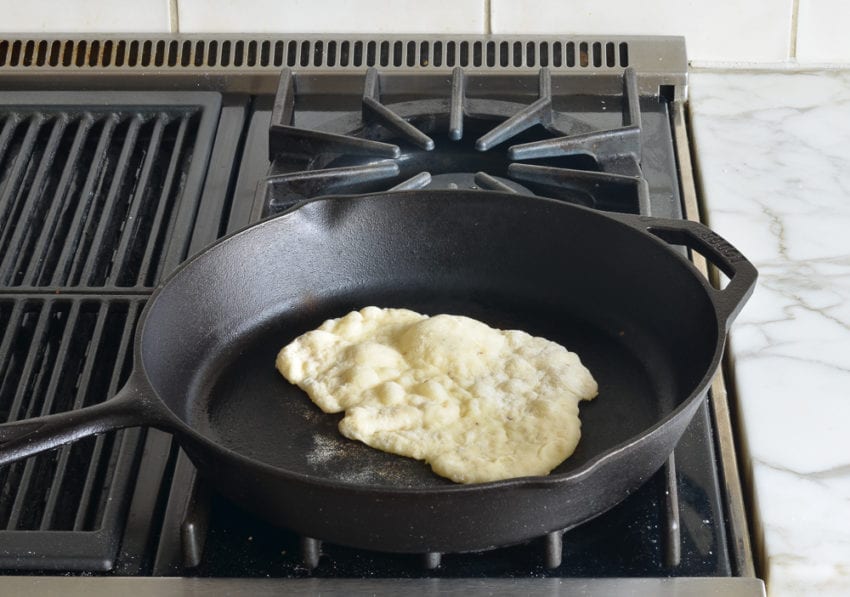
Flip the naan and cook a few minutes more.
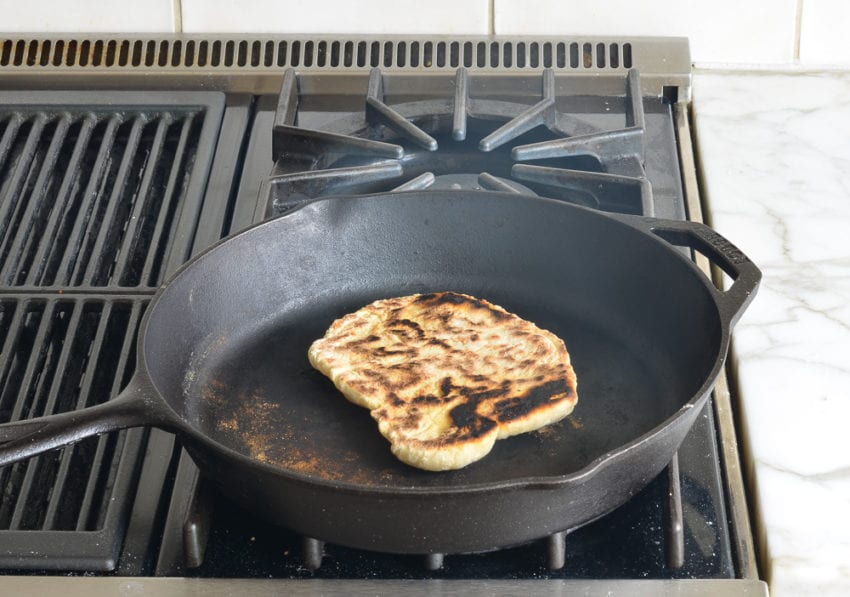
Brush the cooked naan with melted butter, and repeat with remaining dough balls.
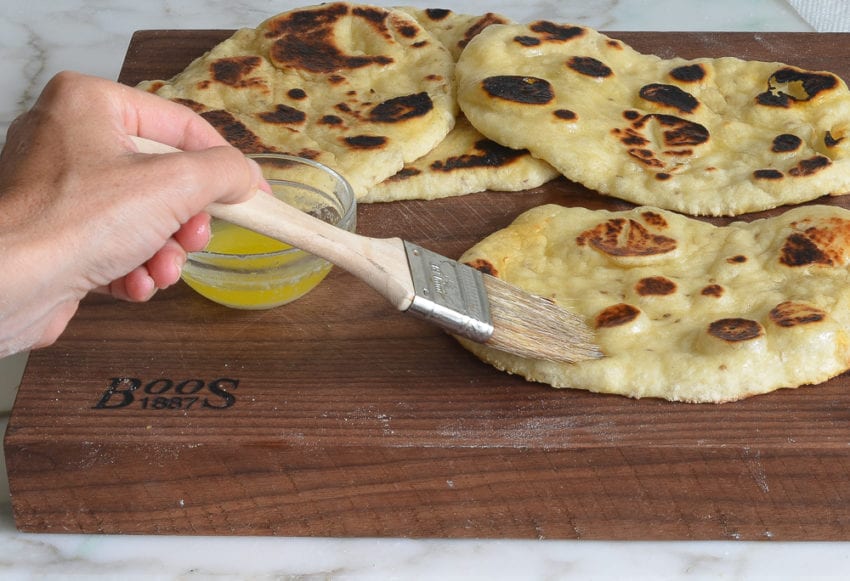
Sprinkle with parsley, if using, then serve warm.
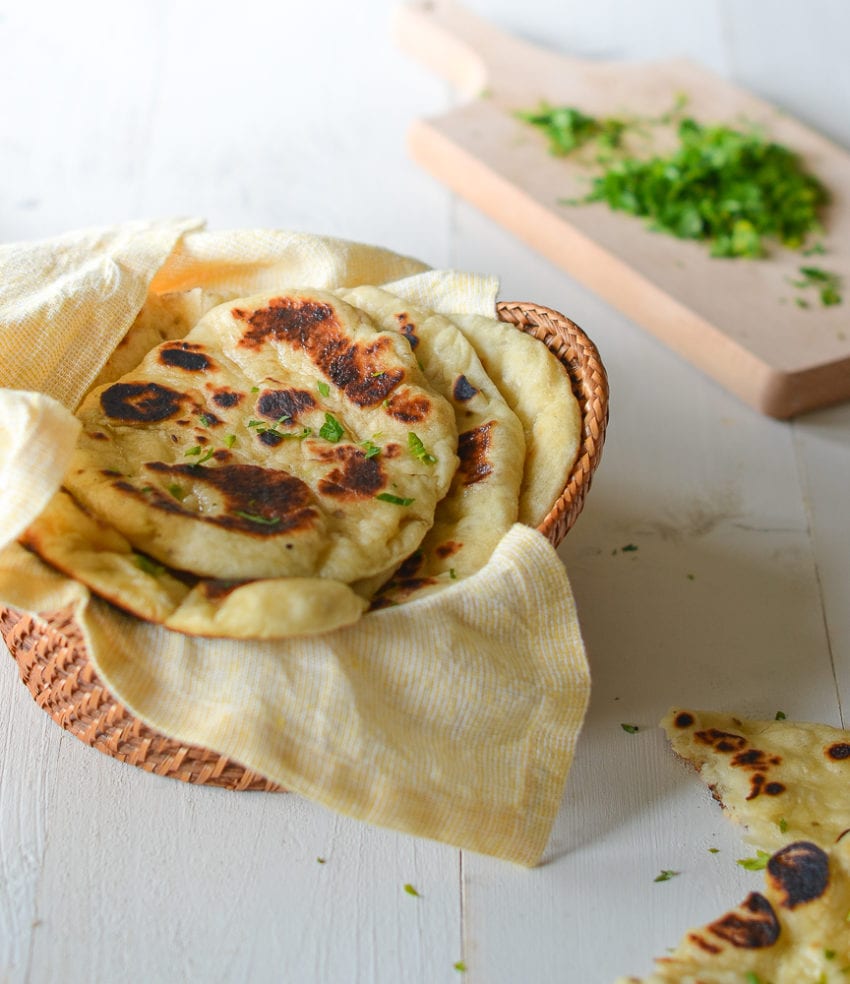
You may also like
Frequently Asked Questions
A: Depending on how far ahead you want to make the naan, you have a few options. If serving within one day, store the naan in resealable plastic bag at room temperature. For longer storage, wrap each piece of cooled naan securely in plastic wrap and put all the rounds in a sealable plastic bag, then freeze for up to 3 months. To reheat, wrap the naan in aluminum foil and warm in a 350°F oven until hot.
A: Instant yeast and active dry yeast are both types of yeast used in baking, but they have distinct differences. Active dry yeast has larger granules surrounded by a protective shell, which often requires it to be dissolved in warm water (a process known as proofing) before mixing with other ingredients. In contrast, instant yeast features finer granules without this protective layer, allowing it to dissolve and activate more rapidly. This means that instant yeast can typically be mixed directly into dry ingredients without the need for proofing.
A: Active dry yeast may be used instead of instant/rapid-rise yeast in this recipe, however, the dough will take longer to rise. To give active dry yeast a “head start” and speed things up, you can dissolve it in the lukewarm water and let it sit until frothy, about 10 minutes. After that, add it to the flour, sugar, salt, and anise seeds, and proceed with the recipe.
A: Sure! I’d add some minced garlic to some melted butter and brush it on the bread after it’s cooked.
Video Tutorial
Homemade Naan
Learn to make irresistibly soft and pillowy naan in your own kitchen with this simple recipe – it far outshines any store-bought version.
Ingredients
- 2 cups all purpose flour, spooned into measuring cup and leveled off with a knife, plus more for rolling (see note)
- 1 tablespoon sugar
- 1 teaspoon instant dry yeast/rapid-rise yeast (see note)
- 1 teaspoon salt
- Heaping ½ teaspoon anise seeds (optional)
- 3 tablespoons plain yogurt
- 2 tablespoons extra virgin olive oil
- ¾ cup warm water (about 100°F)
- 2 tablespoons melted salted butter, for brushing on finished naans
- 1 tablespoon chopped fresh Italian parsley (optional), for serving
Instructions
- In a large bowl, whisk together the flour, sugar, yeast, salt and anise seeds (if using). Set aside.
- In a medium bowl, whisk together, the yogurt, olive oil, and ¾ cup warm water (about 100°F). Add the yogurt mixture to the dry ingredients and mix with a fork. When the dough is about to come together, dust your hands with flour and knead gently into a soft, slightly sticky dough (sprinkle more flour, little by little, if the dough is too wet to work with). As soon as it comes together, stop kneading.
- Lightly oil or spray a clean bowl with nonstick cooking spray (the bowl should be large enough to allow the dough to double in size). Transfer the dough to the prepared bowl and cover with plastic wrap or a damp kitchen towel. Let sit in a warm place for 1 to 1½ hours, or until about doubled in size (hint: the warmer the spot, the faster the dough will rise).
- Fill a small bowl with about ½ cup flour. Dust a work surface with some of the flour and dump the dough on top. Sprinkle some of the flour on top of the dough and on your hands. Shape the dough into a long rectangle and cut into 6 equal portions, dusting with more flour as necessary so the dough doesn't stick. Roll each portion of dough in the bowl of flour to keep them from sticking.
- Warm a large cast iron or heavy nonstick pan over medium-high heat until very hot. Using a rolling pin, roll one of the dough balls into an oval shape about ⅛-inch thick (it should be about 9 x 4 inches). Pick up the dough and flip-flop it back and forth between your hands to release any excess flour; then gently lay the dough in the dry skillet and cook until the top is bursting with air bubbles and the bottom is golden and blackened in spots, a few minutes. Flip the naan and cook about 1-2 minutes more until the the bottom is lightly browned and blistered in spots. Remove the naan from the skillet and brush with melted butter. Place the naan in a tea towel-lined dish to keep warm. Repeat with the remaining naans, adjusting the heat lower if necessary as you go (I usually find it necessary to lower the heat to medium after the first naan). Sprinkle with parsley, if using, and serve warm.
- To keep the cooked naan warm, place them in a 200°F oven. Store leftovers in a Ziplock bag and reheat in a 350°F oven wrapped in foil.
- Note: I use King Arthur flour, which is higher in protein than some other all-purpose flours. If using a flour with a lower protein content, such as Gold Medal, you will likely need to add a few more tablespoons of flour.
- Note: Active dry yeast may be used instead of instant/rapid-rise yeast, however, the dough will take longer to rise. To give active dry yeast a boost, you can dissolve it in the lukewarm water and let it sit until frothy, about 10 minutes. After that, add it to the flour, sugar, salt, and anise seeds, and proceed with the recipe.
- Freezer-Friendly Instructions: The naan can be frozen for up to 3 months. Once it’s completely cooled, wrap each piece securely in plastic wrap and put all the rounds in a sealable plastic bag prior to putting in the freezer. To reheat, wrap the naan in aluminum foil and warm in a 350°F oven until hot.
Nutrition Information
Powered by ![]()
- Serving size: 1 naan
- Calories: 241
- Fat: 9 g
- Saturated fat: 3 g
- Carbohydrates: 35 g
- Sugar: 3 g
- Fiber: 1 g
- Protein: 5 g
- Sodium: 323 mg
- Cholesterol: 11 mg
This website is written and produced for informational purposes only. I am not a certified nutritionist and the nutritional data on this site has not been evaluated or approved by a nutritionist or the Food and Drug Administration. Nutritional information is offered as a courtesy and should not be construed as a guarantee. The data is calculated through an online nutritional calculator, Edamam.com. Although I do my best to provide accurate nutritional information, these figures should be considered estimates only. Varying factors such as product types or brands purchased, natural fluctuations in fresh produce, and the way ingredients are processed change the effective nutritional information in any given recipe. Furthermore, different online calculators provide different results depending on their own nutrition fact sources and algorithms. To obtain the most accurate nutritional information in a given recipe, you should calculate the nutritional information with the actual ingredients used in your recipe, using your preferred nutrition calculator.

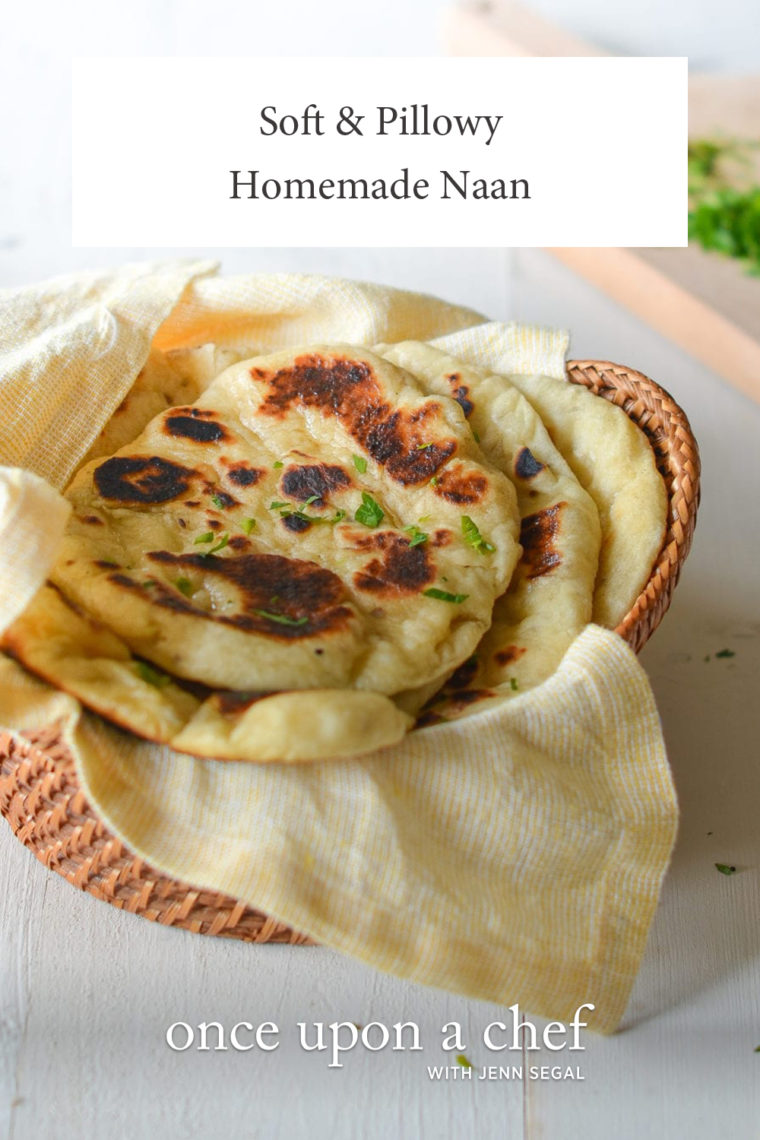

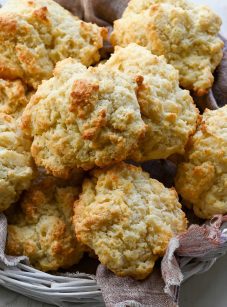
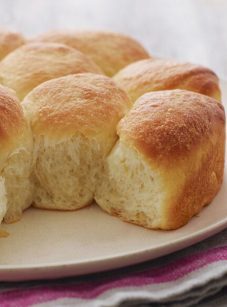
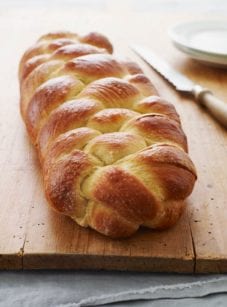
These were good, but I made them on my cast iron griddle. They burnt a little in some spots & that left residue on my griddle that I couldn’t get off with soap & hot water, a plastic scrub pad (you’re not supposed to use steel wool on cast iron), salt or baking soda. I even tried putting some water on the griddle & heating it up with baking soda on it & even that didn’t work. Any other ideas as to how to save my griddle? Anything that I cook on it next will now burn if I can’t get that residue off. Other than that, the naan were good. I’ll do them in a non-stick fry pan next time.
Hmmm… it sounds like you’ve tried everything I would have tried. I did find an option online that you may want to try (the oven method).
The way I clean my cast iron is a wash cloth size stainless steel chain link product called “The Ringer”bought it on Amazon. It will not remove your seasoning from your skillet. 98% of the time things don’t stick to my cast iron. But when something does, I put a light coat of Avocado oil on the surface of my cast skillet, place it in oven at 425 or so for about 15 minutes. Meanwhile, boil some water.
I take the hot cast skillet out of the oven and place it in the sink then slowly pour that boiling water onto that very hot skillet. Then I bunch “The Ringer” up to a ball so to speak and place the wooden spoon on top of it and clean the skillet by wiping in circles on the surface of the skillet using the spoon on the ringer because obviously the skillet is hot. Works every time. I never use soap on my cast skillet. Then I dry it, put it back in the oven for a few minutes to make certain any residual water is evaporated and then I lightly oil the skillet again and throw it back in the oven for another 10-12 minutes, turn off and let it cool. It will be back to good. I’ve been using The Ringer for quite some time now. It will not damage you cast iron nor disrupt the seasoned surface.
You could try burning it off by using a torch or by turning the pan upside down on the stovetop (gas stove only). You may need to reseason the pan a bit afterwards
I love this recipe! I make a double or triple batch and freeze them. Just wanted to share a tip with everyone- do NOT over mix the dough. Made the mistake once to use a mixer with a dough hook (made a double batch and found using a fork difficult) and turned it into a very sticky mess that was incredibly hard to work with. I have found the best thing to work with is a danish dough whisk. It works wonders just mixing it thoroughly enough to incorporate well without over mixing (works great on pancake batter too). Makes a beautiful dough. Last suggestion is using bread flour. Thank you Jenn for this recipe and all your amazing recipes.
I have not made this yet, but have a question about the amount of yeast. Most recipes call for 2 1/4 teaspoons of yeast and yeast packages contain that amount. Is that too much for this recipe and what are the reasons for the smaller amount of yeast?
Hi Jo, this recipe is a smaller one with not as much flour as ones that call for a whole packet of yeast. I wouldn’t recommend using the entire packet here. Hope you enjoy the naan if you make it!
Need to make these ahead. Any tips to keep them fresh and reheat? Thanks
Hi Emeline, Depending on how far ahead you want to make the naan, you can freeze them. See the bottom of the recipe for freezer-friendly instructions. If you make them earlier in the day and then serve at dinner, store them in a Ziplock bag and reheat in a 350°F oven wrapped in foil. Hope you enjoy!
This is just the advice I was looking for! I wondered how to sequence the meal prep if making them to accompany your butter chicken since the suggestion is to serve the naan warm. It might be worthwhile to include this tip within the recipe notes for those making multiple dishes.
Hi Yvonne, the very last paragraph actually mentions how to keep them warm. Hope you enjoy both the naan and the chicken!
Delicious
I made this but I used cup 4 cup gluten free flour and sour cream instead of the yogurt and it turned out amazing!! Definitely a recipe to keep!!
Thank you for your review about making this gluten free! I’ve been wondering if I could make gluten free naan. Great to know it turned out amazing using this recipe subbing Cup 4 Cup GF flour blend. Thanks!
Hi! Can you do these with lactose free greek yogurt or coconut milk yogurt for a lactose free option?
The lactose-free yogurt should work. Enjoy!
How does one double this recipe to make 12 breads? Do you just double the ingredients?
Yes, exactly. Hope you enjoy!
This is very tasty. I used the “Dough” setting on a bread machine, rolled them out and cooked them in a cast iron pan on top of an electric stove.
Came out perfectly, dough a little sticky, so had to add more flour. Very satisfying watching them puff up whilst cooking. As good as any restaurant. Thank you
Best and easiest naans ever!
These are a dinner-staple for us, and I have made them as naans, mini naans and folded flatbreads for stuffing.
I was never entirely sure if they are supposed to be kneaded, or if they are no-knead.
I kneaded them for 10m to begin with, but then experimented with no-knead and have never gone back.
For no-knead, the dough seems to improve overnight in the fridge. I have even prepared the dough the day before and refrigerated it, taken it out in the morning and driven with it in a Tupperware (along with all the gear including silipat rolling mat!) a hundred miles to the grandparents (one of whom is Indian) – the dough came to room temperature in the car and I fried them there! Lovely fluffy naans, such a treat for our family reunion.
For re-heating cooked naans, freezing them and then ovening them in foil is the way to go – they turn out unbelievably moist and fresh that way. (Rather than just leaving the cooked naans out on the counter overnight and then reheating – those ones seem to become a little drier – though still yummy).
I am experimenting with adding 100% hydration sourdough discard to the dough at the moment, substituting for equal weights of flour and water…still testing! (Too wet and the bread takes on more of an open, chewy, artisanal texture).
Thanks so much again for another great recipe, Jenn!
Hi, I’d try just reducing the original water content not the flour and see how you get on. And/or use far less starter and start earlier, if that makes sense